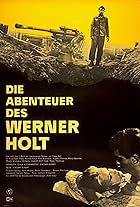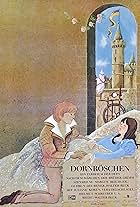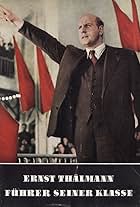Recherche détaillée
- TITRES
- NOMS
- COLLABORATIONS
Filtres de recherche
Saisir la date complète
à
ou saisir simplement aaaa ou aaaa-mm ci-dessous
à
à
à
Exclure
Inclut uniquement les titres avec les sujets sélectionnés
à
En quelques minutes
à
1-50 sur 161
- Once upon a time, there lived a lazy miller who spent all his time drinking wine and telling stories. When the king's treasurer comes to him with a demand to pay the tax, the miller lies that his daughter Marie can spin gold from straw.
- Eight space cargo-ships disappear without a trace within three days. And the orbit station "Margot" has suddenly fallen silent. The space council is faced with a mystery and the scientist in charge, Maria Scholl, sees no other solution than ordering a total flight stop to this mysterious sector of space. Her colleague, Prof. Tal seems to be suspicious since he knows things before they are even released. A forbidden look into his personal file brings to light that Tal was part of the Eolomea project that never found approval of the commission in charge.
- After landing on TEM 4 following a distress call, the crew finds Temers denying sending it. At a ruler's party, drugged food clouds their minds. Navigator Suko, alone on the ship, makes a horrific discovery.
- A German stage actor's cult following and popularity after protesting the 1968 invasion of Czechoslovakia
- In the little town of Herzsprung - whose name harks back to an ancient legend of broken hearts - almost nothing has changed since German unification, except a rise in unemployment. Johanna, a young mother and widow, becomes one of the unemployed and lives on welfare. To make matters worse, she falls in love with a dark-skinned, roving adventurer and the whole village starts talking about it. Director Helke Misselwitz became internationally known for her documentary Winter Adé (1988), about women in the final years of the GDR. Herzsprung was her feature film debut. The lyrics for the song, "Oh, Your First Love," sung by Eva-Maria Hagen, were adapted by singer-songwriter Wolf Biermann, expelled from the GDR in 1976.
- Whites expel Dakotas from Black Hills after finding gold, defying treaty. Chief's son Tokei-ihto rejects barren reservation after his father's murder. Out of prison, he leads tribe's flight to Canada, confronting murderer Red Fox.
- As a painter in the court of King Carlos IV, Goya - played by the great Lithuanian actor Donatas Banionis (The Red Tent, Solaris) - has attained wealth and reputation. He believes in King and Church, yet he is also a Spaniard who dearly loves his people. This contradiction presents him with a dilemma. Based on Lion Feuchtwanger's novel, Goya is one of ten East German films originally shot in 70mm. This release is the director's cut and shows the influence of great filmmakers from Buñuel and Saura, to Eisenstein. Goya was nominated for the Golden Prize at the 1971 Moscow International Film Festival.
- During Great Depression, a family is evicted from their apartment and with no other option they move to a tent camp called Kuhle Wampe.
- Nine-year old George, son of British settlers, is kidnapped by Iroquois and raised by the chief who adopts him. Later he gets the chance to return to his family but refuses because he has discovered that the palefaces are the true savages.
- Fall 1989: Jan is almost 16. Caught while trying to escape to West Germany, he is transferred from prison to a juvenile detention center. Here, he meets Jana ... and what starts as a bet, becomes true love. When Jana gets pregnant, the situation spirals out of control. In the summer of 1990, Jana and Jan flee into the unknown, insecure future of a new Germany. In this film, the director, internationally known for his critical films about children and young people, cast non-professional actors - some from juvenile detention centers - in the leading roles.
- Ten-year-old Ernst wants to go on a bike ride with his father Alfons, but his mother decides that they should all go to Seifertsgrün together for their golden wedding anniversary. Finally, she is persuaded to let the two of them ride their bikes if they promise to arrive on time. Ernst and Alfons set off - from Mecklenburg to the Erzgebirge. It is a journey with many obstacles and adventurous experiences, because Alfons intervenes wherever help is needed. Among other things, he saves a skydiver's bride who has landed in a tree in her wedding dress. The agreed time draws ever closer, and father and son are still a long way from Seifertsgrün. But they too get help and land at the banquet table in an airplane.
- Little Sabine has spent her childhood in an orphanage after her parents died in a car accident. When one of the women in charge at the orphanage, Edith, leaves to have a baby, Sabine runs away, because Edith was the only adult there she could trust. She then wanders through the city to find someone to take her in. She meets a lot of people on her journey, but she seems out of place everywhere she goes until, at last, she realizes that there is a special place where she belongs.
- Two teenagers are drafted into Hitler's army. One becomes fanatical, while the other realizes war's senselessness. When his friend is executed, the disillusioned soldier turns against his own forces in this anti-war film based on a novel.
- DDR film from the mid-60s: Li and Al, not long married, want to divorce. They feel trapped in their marriage and in their one-room apartment. They long for an unconventional, meaningful life, but the search for meaning confounds them.
- Susanne is a young single mother who lives a somewhat "carefree" lifestyle. After quitting her job, she finds herself in trouble financially and attempts a minor insurance fraud to make ends meet. Despite its rare view of everyday socialism from a woman's perspective, East German officials were critical of this frank portrayal of a less-than-ideal socialist citizen and turned down all invitations for the film to be screened abroad. In West Germany, however, Evelyn Schmidt's film received much praise for its critical feminist approach. The Bicycle was part of the 2005 Rebels with a Cause: The Cinema of East Germany retrospective, shown at The Museum of Modern Art, New York.
- The film is set in the 1930s in Germany. Maria Rheine and Mark Löwenthal, two young actors working in a small theater, are in love with each other. Their love affair is interrupted by Nazi racial policies; Mark is no longer allowed to perform in German theaters because he is a Jew. In order to continue acting, he joins the newly formed Jewish Theater in Berlin. Maria, who is not Jewish, faces no restrictions on her career, and she becomes a successful actress at a big theater in Munich. But her love for Mark eventually leads her to decide to sacrifice both career and security to remain close to him. She fakes a suicide, assumes a Jewish identity and, as Manja Löwenthal, joins the Jewish Theater
- When the Fairy of Industry is not invited to the birth of the princess, she sees that the child pricks her finger on a spindle and falls in a cursed sleep. For 100 years she has to wait for a prince to awaken her again.
- The second part of the Ernst Thälmann films encompasses the time period between 1930 and Thälmann's murder in 1944. It shows Thälmann's battle to achieve a united front with all German workers against the National Socialists, his arrest following Hitler's seizure of power and the eleven years of his incarceration, in which he is unwavering in his beliefs until his death. An attempt to free him on the part of his comrades ends disastrously, and a corrupt offer of freedom from Göring himself receives Thälmann's refusal. He must also witness how his brave fellow Socialist Aenne Jansen in the women's prison across from his tragically loses her life during a bombing raid. The second primary character of the film is Aenne's husband Fiete Jansen, who already proved his loyalty to Thälmann's side as a friend and fighter in the first part. As the commander of the Thälmann Battalion, he fights in Spain on the side of the people and later in the ranks of the Red Army toward a speedy end to the war against Fascism.
- Four young Germans in a Soviet POW camp decide to join the Red Army to hasten the end of the war. Their new identities elicit different reactions from Germans and Russians, and are difficult to live up to when they are sent behind German lines.
- At the beginning of the 19th century, white settlers regularly make and break treaties with the Native American inhabitants to gain possession of vast hunting grounds at ludicrously low prices without any bloodshed. Harrison, Governor of Indiana, has made and broke no less than fifteen such treaties, driving increasing numbers of Indians out to the infertile West. To put a stop to this criminal practice, the Shawnee Chief Tecumseh tries to unite the Native Americans. In 1811, he founds a tribal alliance and has Native American lands declared communal property. Chiefs who sell their land in spite of this agreement are to be killed. During the chief's absence, however, Harrison raids the "sacred city" of Tippecanoe founded by Tecumseh and his supporters, reducing it to ashes. The few survivors of the bloodbath flee to Canada, where they join forces with the English as they wage war against America. But they, too, fail to keep their promise to Tecumseh concerning an independent Indian state. In a decisive battle, the defeated English betray and abandon their Native American allies. Together with the other members of his tribe, Tecumseh is killed too.
- In the latter half of the 19th century, gold is discovered in the Black Hills, an area which has already been allocated to the Dakota Indians as a winter reservation in a treaty. Nevertheless, gold diggers, profiteers and adventurers flock to the region. Among them is the hard-hearted land speculator Bludgeon, who tries to expel the Indians using brutal methods like slaughtering entire herds of buffalo. The Dakotas take their revenge by attacking a Union Pacific train. While Chief Farsighted Falcon and his men are out hunting, Bludgeon and his gang massacre the Indian village. The Dakota warriors retaliate and soon the gold diggers' town becomes the scene of a giant battle. Only the advancing cavalry manage to head off certain defeat for the Whites. Farsighted Falcon conquers Bludgeon in single combat, however. Gathering up the remaining members of his tribe, he leads them to safety elsewhere.
- Rebellious young Werther is passionately, but hopelessly, in love with Lotte. Although he knows that she is married to somebody who can offer her a secure future, Werther tries to be near her. Lotte cannot decide between these two men. She eventually rejects Werther, who does not survive her decision. Based on the novel by Goethe. Director Egon Günther and set designer Helga Schütz make cameo appearances.
- In this film, Wolf and scriptwriter Wolfgang Kohlhaase explore the role of art and the artist in socialist society. A sculptor questions the reception and value of his work, in a delicately nuanced narrative interweaving personal memories, historical dilemmas, and political defeats.
- Two teens, Sauly and Mick, both want to reach the ocean, and then they were approached by a man who told Sauly he had sold his guardian angel. The boys do not really believe in guardian angels or is it possible they are such things?
- The Rabbit Is Me was made in 1965 to encourage discussion of the democratization of East German society. In it, a young student has an affair with a judge who once sentenced her brother for political reasons; she eventually confronts him with his opportunism and hypocrisy. It is a sardonic portrayal of the German Democratic Republic's judicial system and its social implications. The film was banned by officials as an anti-socialist, pessimistic and revisionist attack on the state. It henceforth lent its name to all the banned films of 1965, which became known as the "Rabbit Films." After its release in 1990, The Rabbit Is Me earned critical praise as one of the most important and courageous works ever made in East Germany. It was screened at The Museum of Modern Art in 2005 as part of the film series Rebels with a Cause: The Cinema of East Germany.
























